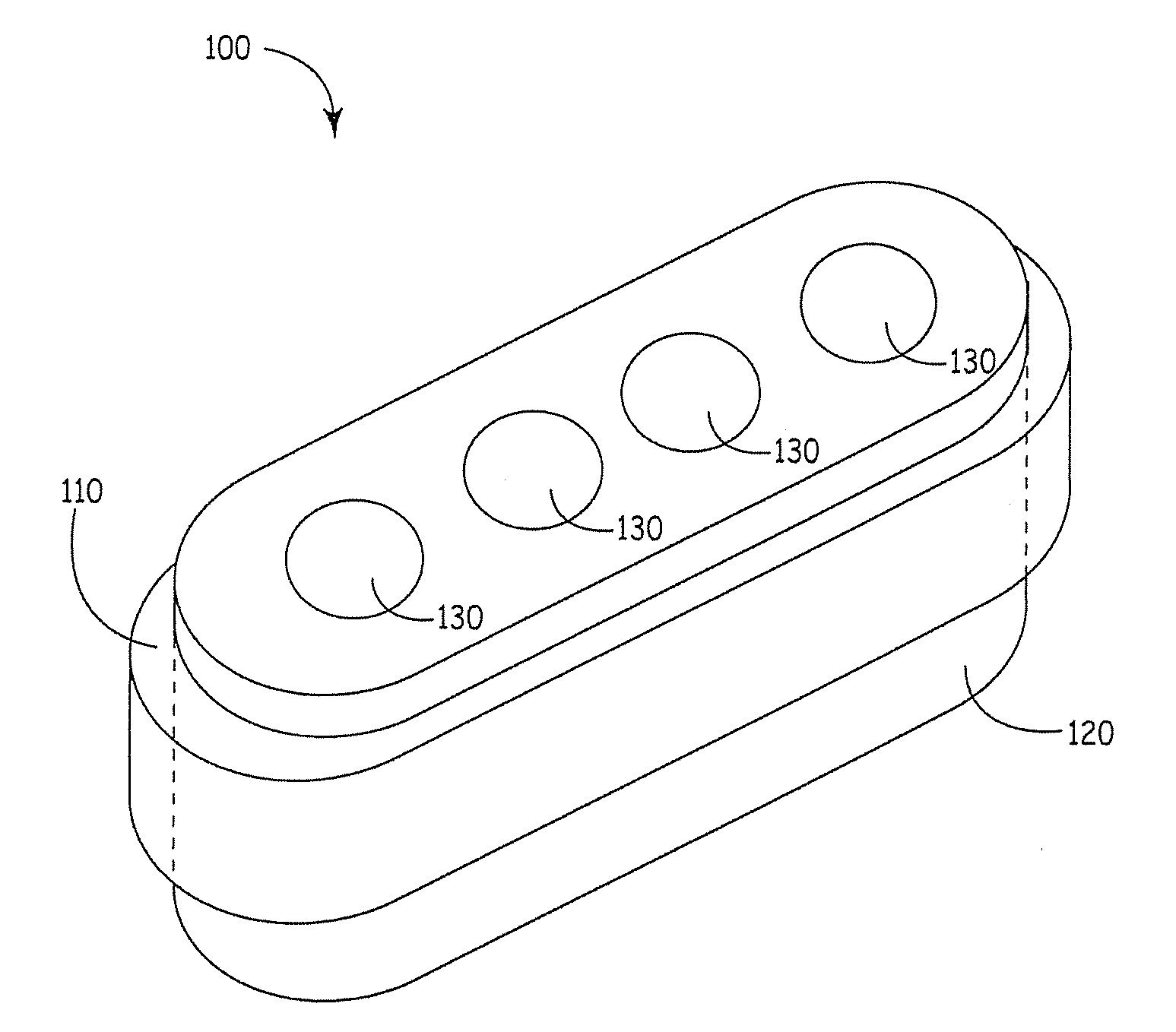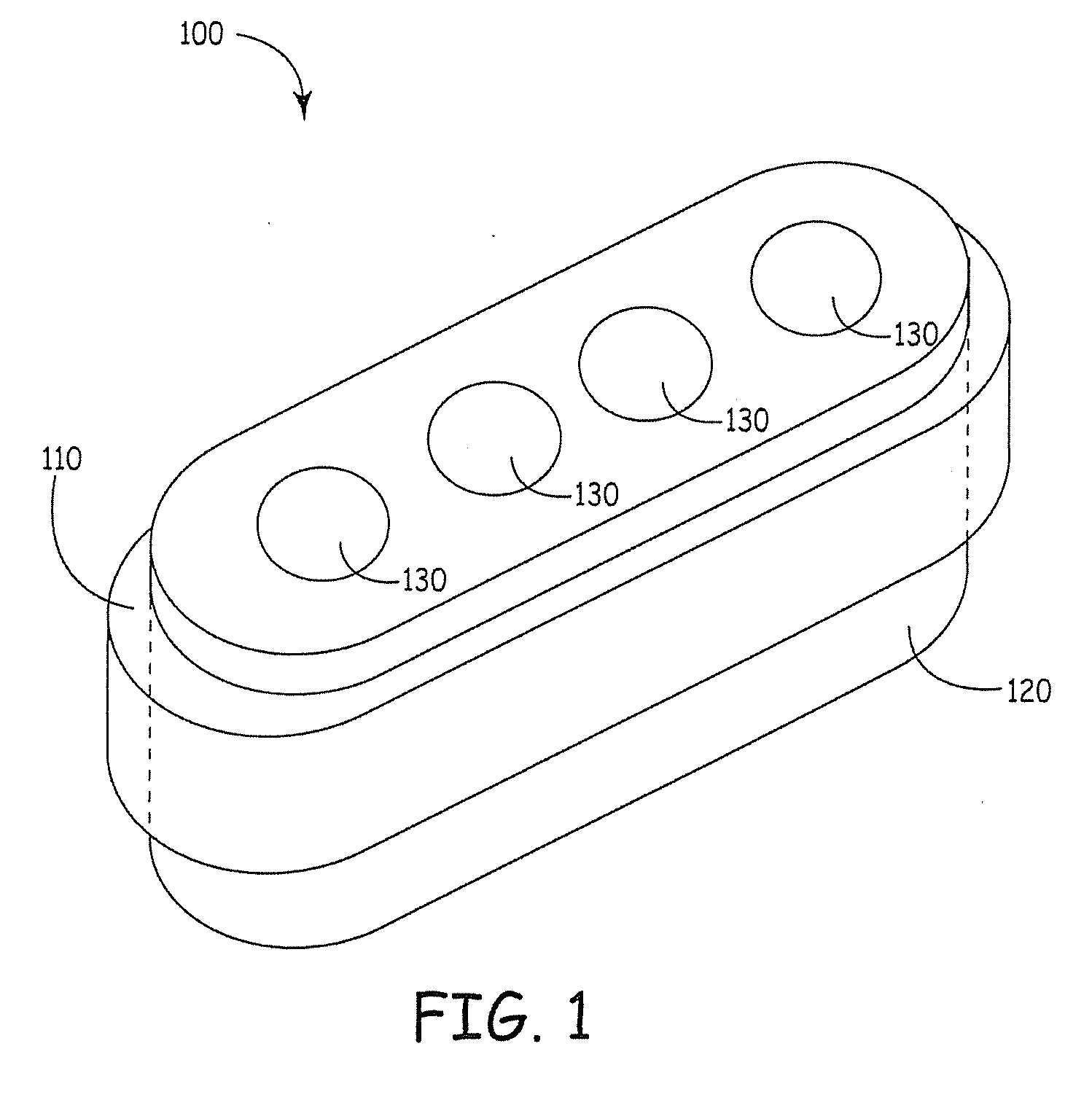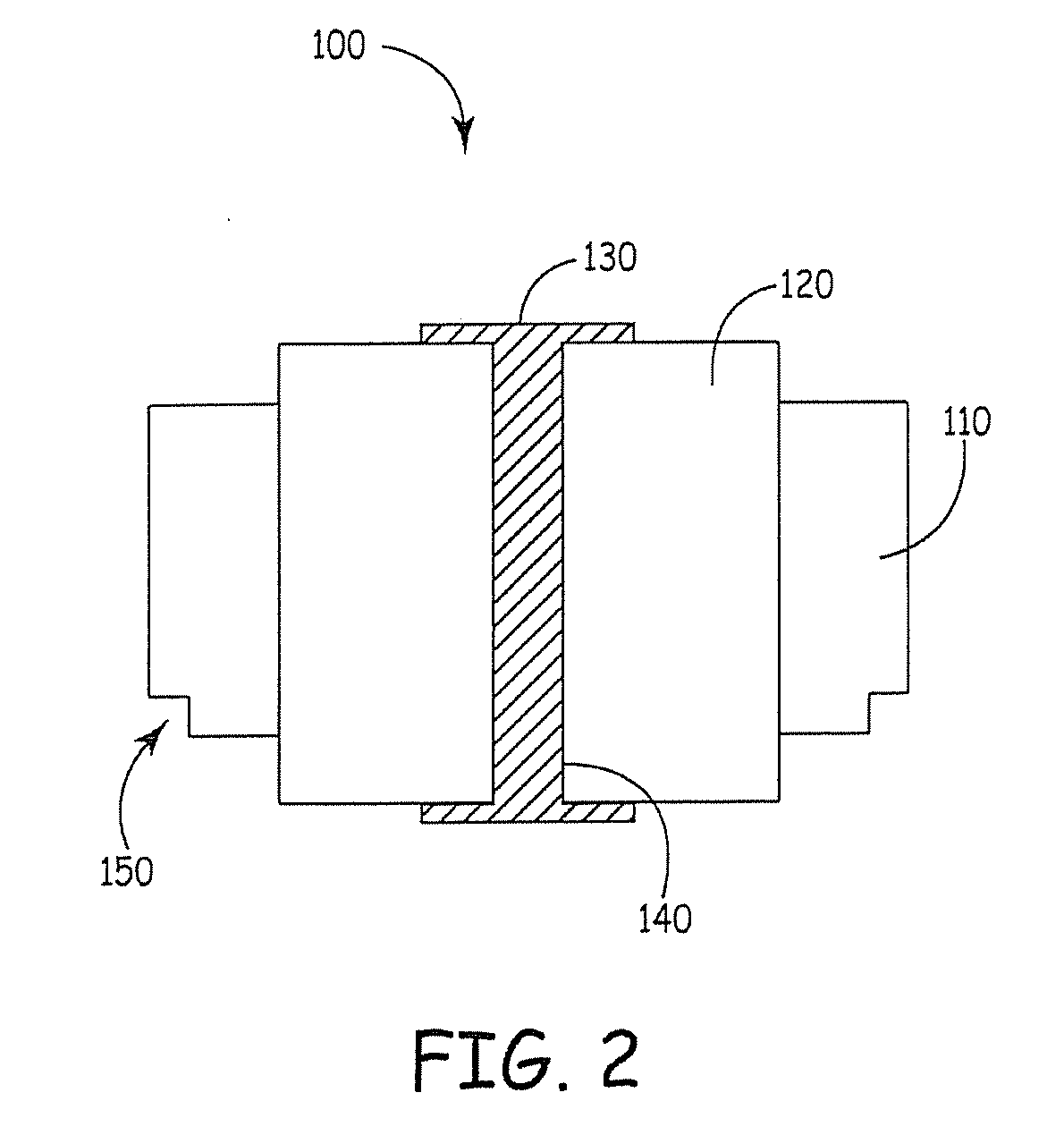Injection molded ferrule for cofired feedthroughs
a cofired feedthrough and injection molding technology, applied in the direction of electric discharge tubes, basic electric elements, electric apparatus, etc., can solve the problems of difficult and complex multi-step procedure to ensure the formation of reliable, high-quality electrical connections, and inability to use relatively large single-pin feedthroughs for many applications
- Summary
- Abstract
- Description
- Claims
- Application Information
AI Technical Summary
Benefits of technology
Problems solved by technology
Method used
Image
Examples
example 1
[0061]With reference to FIGS. 1 and 2, an embodiment of a feedthrough assembly 100 constructed in accordance with the present technology is shown in perspective and cross-sectional views, respectively.
[0062]The feedthrough assembly 100 includes a metal injection molded titanium ferrule 110. The ferrule110 can be over-molded about a cofired ceramic insulator 120 using a metal injection molding process. Upon sintering, densification causes the ferrule 110 and insulator 120 to bond and form a hermetic seal without any joining material, such as braze or solder, present between the ferrule 110 and insulator 120. The insulator 120 can comprise alumina (i.e., Al2O3) that can electrically isolate one or more conductive pads 130 and vias 140 comprising platinum, for example. The ferrule 110 can include a flange 150 to facilitate welding of the feedthrough assembly within an opening of an IMD cover, for example. Variations of the insulator 120 include where the electrical connections includin...
example 2
[0063]With reference to FIGS. 3A and 3B, two further embodiments of feedthrough assemblies 160, 190 constructed in accordance with the present technology are shown in cross-sectional view.
[0064]The feedthrough assemblies 160, 190 include metal injection molded titanium ferrules 180, 210 that are over-molded about insulators 170, 200 using a metal injection molding process. In such cases, the insulator is placed within at least a portion of the mold. Use of metal injection molding allows the ferrule to be molded about an insulator geometry that precludes separate molding of the ferrule followed by fitting the ferrule about the insulator. One or more features of the insulator may make it difficult or even impossible to fit a separately molded ferrule about an insulator.
[0065]As shown in FIG. 3A, an insulator 170 may have an inset portion 220 that is filled by a ferrule 180 when the ferrule 180 is over-molded about the insulator 170. As shown in FIG. 3B, an insulator 200 may have an ou...
PUM
| Property | Measurement | Unit |
|---|---|---|
| temperature | aaaaa | aaaaa |
| temperature | aaaaa | aaaaa |
| grain size | aaaaa | aaaaa |
Abstract
Description
Claims
Application Information
 Login to View More
Login to View More - R&D
- Intellectual Property
- Life Sciences
- Materials
- Tech Scout
- Unparalleled Data Quality
- Higher Quality Content
- 60% Fewer Hallucinations
Browse by: Latest US Patents, China's latest patents, Technical Efficacy Thesaurus, Application Domain, Technology Topic, Popular Technical Reports.
© 2025 PatSnap. All rights reserved.Legal|Privacy policy|Modern Slavery Act Transparency Statement|Sitemap|About US| Contact US: help@patsnap.com



